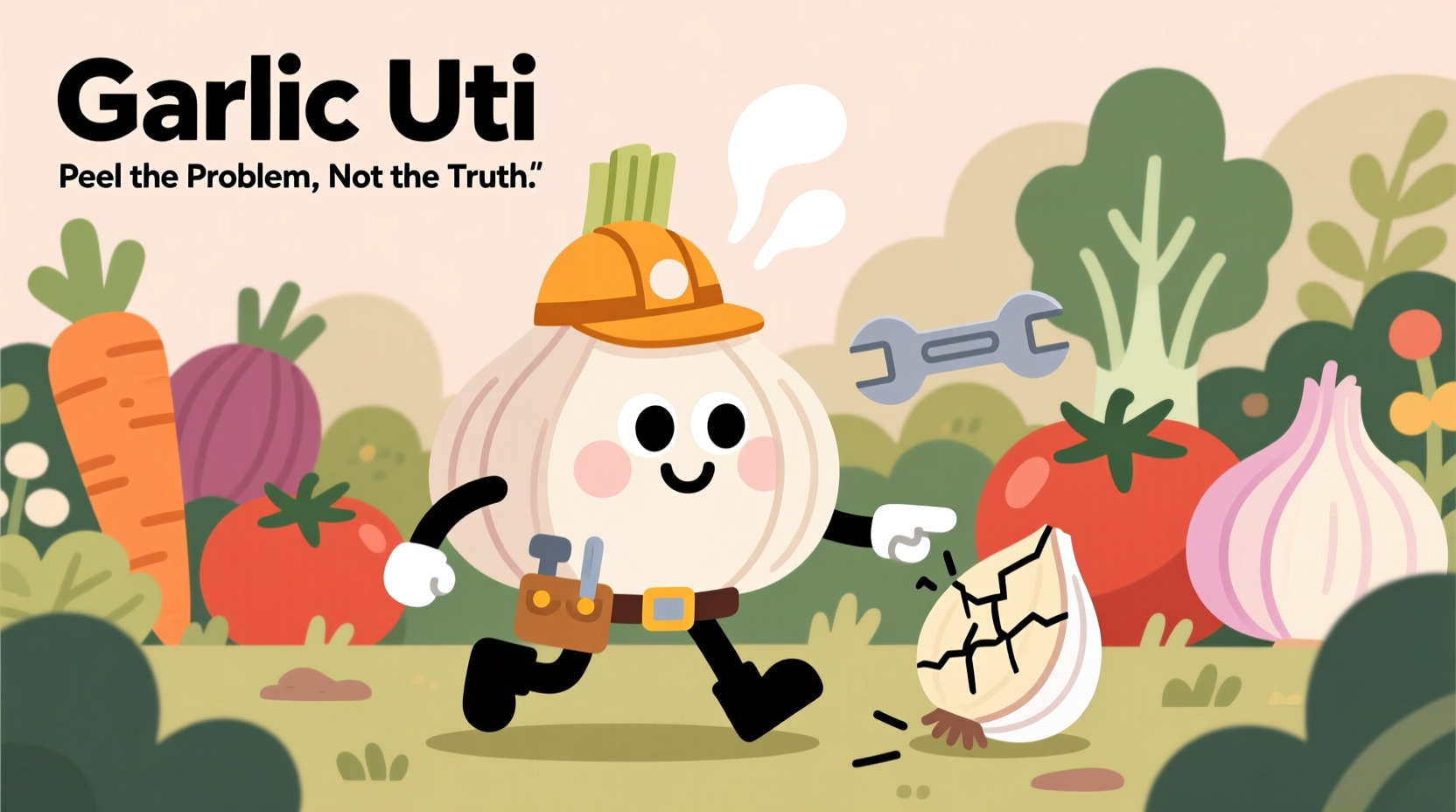When you're dealing with the burning discomfort of a urinary tract infection, it's natural to search for natural solutions. Many people wonder can garlic help with UTI symptoms or serve as an alternative to antibiotics. This article examines what scientific research actually says about garlic's potential role in urinary health, separating evidence-based facts from popular myths.
Understanding UTIs: Why Medical Treatment Matters First
Urinary tract infections affect millions of people annually and occur when bacteria—most commonly Escherichia coli—enter the urinary system. Left untreated, UTIs can lead to serious kidney infections. The Centers for Disease Control and Prevention emphasizes that prompt antibiotic treatment is essential for resolving UTIs and preventing complications.
While many seek natural remedies for UTI due to concerns about antibiotic resistance or side effects, it's crucial to understand that delaying proper medical treatment can worsen outcomes. UTIs represent a significant public health concern that requires evidence-based approaches.
Garlic's Antimicrobial Properties: What the Research Shows
Garlic contains allicin, a compound with demonstrated antimicrobial effects in laboratory settings. Studies published in the Journal of Antimicrobial Chemotherapy confirm garlic extract can inhibit various bacteria, including some strains of E. coli.
However, there's a critical distinction between laboratory results and clinical effectiveness in humans. The National Center for Complementary and Integrative Health states: "While laboratory studies show garlic has some antibacterial properties, there's limited evidence from clinical trials to support using garlic for preventing or treating infections in people." 
Evidence Timeline: From Traditional Use to Modern Research
Garlic has been used for medicinal purposes for thousands of years. Ancient Egyptian medical texts from 1550 BCE document its use for various infections. Modern scientific investigation began in the 1940s when researchers isolated allicin.
| Time Period | Research Development | Relevance to UTIs |
|---|---|---|
| Ancient Times | Traditional medicinal use | Anecdotal applications for infections |
| 1944 | Allicin compound isolated | Foundation for antimicrobial research |
| 1980s-1990s | Initial laboratory studies on bacteria | Limited specific UTI research |
| 2000s-Present | Advanced compound analysis | Some promising lab results, but minimal human trials for UTIs |
Practical Considerations: Where Garlic Might Fit
While garlic shouldn't replace antibiotics for active UTIs, it may have potential as a complementary approach for prevention. Some research suggests regular garlic consumption might support overall urinary health, though evidence remains preliminary.
Consider these important boundaries when evaluating garlic for urinary tract infection approaches:
- Not for active infections: Never substitute garlic for prescribed antibiotics when experiencing UTI symptoms
- Prevention potential: Some studies suggest regular consumption might reduce infection frequency
- Dosage uncertainty: No established effective dose for urinary health
- Interaction risks: Garlic supplements can interact with blood thinners and other medications
Comparing Approaches: What Works for UTIs
| Approach | Effectiveness for UTIs | Medical Support | Time to Relief |
|---|---|---|---|
| Prescribed Antibiotics | High (80-95% effective) | Strong clinical evidence | 24-48 hours |
| Increased Fluid Intake | Moderate (supportive) | Recommended adjunct therapy | Varies |
| Garlic Consumption | Unproven for treatment | Limited laboratory evidence | No established timeline |
| Cranberry Products | Moderate for prevention | Mixed clinical evidence | Preventive only |
When to Seek Immediate Medical Care
UTIs require professional medical evaluation. Contact a healthcare provider immediately if you experience:
- Painful urination lasting more than 24 hours
- Fever or chills with urinary symptoms
- Blood in urine
- Pain in your side or lower back
- Symptoms during pregnancy
Attempting to self-treat with garlic supplements for UTI instead of seeking medical care can lead to serious complications including kidney infections.
Integrating Natural Approaches Safely
If you're interested in incorporating garlic into your health routine, consider these evidence-based approaches:
- As part of a balanced diet: Include fresh garlic in meals for potential general health benefits
- For prevention discussion: Talk with your doctor about whether garlic might complement your UTI prevention strategy
- Realistic expectations: Understand that garlic alone won't treat an active infection
- Quality matters: Fresh garlic provides more allicin than processed supplements
Remember that the American Urological Association recommends evidence-based approaches for UTI management, with antibiotics as the primary treatment for active infections.
Conclusion: Prioritizing Evidence-Based Care
While research into garlic's antibacterial properties of garlic continues, current evidence doesn't support using it as a treatment for active urinary tract infections. The most effective approach combines prompt medical treatment with evidence-based prevention strategies.
For those exploring home remedies for urinary tract infection, focus on approaches with stronger evidence like increased fluid intake and proper hygiene, while always consulting healthcare professionals about persistent symptoms. Natural approaches may complement—but never replace—medical treatment for active infections.











 浙公网安备
33010002000092号
浙公网安备
33010002000092号 浙B2-20120091-4
浙B2-20120091-4